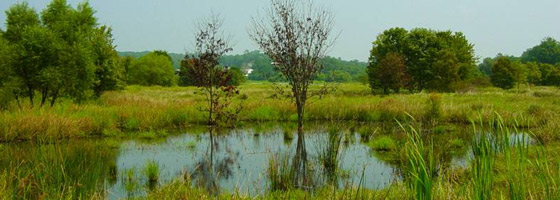Restored wetlands continue to lack native quality, study shows

A study by a University of California at Berkeley postdoctoral fellow shows that, though well intentioned, wetlands restored through the wetland mitigation programs almost never achieve the quality of a natural wetland, even after 100 years. David Moreno-Mateos and his colleagues found that restored wetlands in their study contained 23 percent less carbon, a 26 percent reduction in native plant variety and were 25 percent less productive than native wetlands on average.
They also found that the size of the wetland and temperature affect recovery rate. Wetlands less than 250 acres in area and those in cold regions were even slower to recover than their larger, warmer counterparts. The impact of weakly restored wetlands can be felt in carbon storage. When a wetland is destroyed, the disturbance releases carbon into the atmosphere as a greenhouse gas. Manmade wetlands could take hundreds of years to accumulate the lost carbon. Moreno-Mateos’ next study will assess whether invasive plants or slowly established native plants impact carbon accumulation.
Moreno Mateos suggests a simply worded solution for slow wetland recovery.
“To prevent this, preserve the wetland, don’t degrade the wetland,” he said.
Read more at newscenter.berkeley.edu.
Image credit: State of Delaware





0 comments